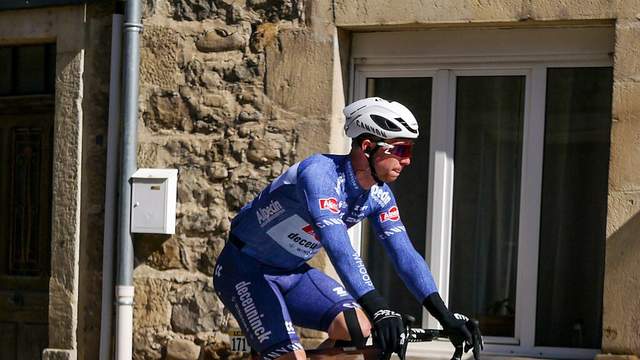Tour de France 2025: Your Guide Before the Tour
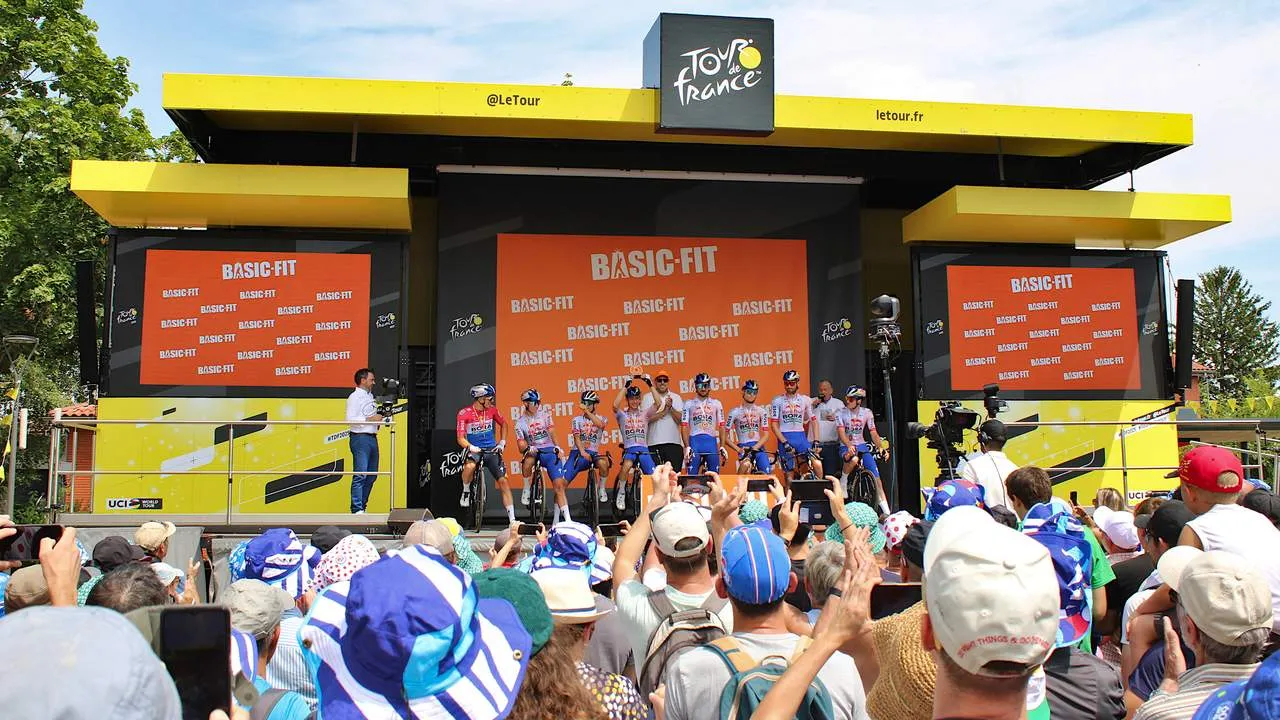
The role of the top favorite undoubtedly belongs to Tadej Pogačar, with Jonas Vingegaard right at his heels – but the list of riders aiming for the podium is far from complete.
Grand Tours bring together nearly 200 cyclists, each with their own roles, goals, and ambitions. While most focus on hunting for stage wins, the pool of riders with a realistic shot at the overall victory is usually very small.
In this article, we’ll take a closer look at the six riders that bookmakers believe have what it takes to fight for the yellow jersey.
Tadej Pogačar (odds 1.4)
- Age: 26
- Height: 176 cm
- Weight: 66 kg
- Team: UAE Team Emirates XRG
- Country: Slovenia
- 2024 season: 22 race days, 11 victories
- Grand Tours: 7 appearances (4 wins, 2 second places, 1 third place)
Jonas Vingegaard (odds 3.3)
- Age: 28
- Height: 175 cm
- Weight: 58 kg
- Team: Team Visma | Lease a Bike
- Country: Denmark
- 2024 season: 19 race days, 2 victories
- Grand Tours: 6 appearances (2 wins, 3 second places, 0 third places) + 46th place at 2020 Vuelta
Remco Evenepoel (odds 11)
- Age: 25
- Height: 171 cm
- Weight: 61 kg
- Team: Soudal Quick-Step
- Country: Belgium
- 2024 season: 20 race days, 4 victories
- Grand Tours: 5 appearances (1 win, 0 second places, 1 third place), 2 DNFs at Giro, 12th at 2023 Vuelta
João Almeida (odds 19)
- Age: 26
- Height: 178 cm
- Weight: 63 kg
- Team: UAE Team Emirates XRG
- Country: Portugal
- 2024 season: 39 race days, 9 victories
- Grand Tours: 8 appearances (0 wins, 0 second places, 1 third place). Top 9 finishes every time he completed a Grand Tour.
Primož Roglič (odds 29)
- Age: 35
- Height: 177 cm
- Weight: 65 kg
- Team: Red Bull Bora-Hansgrohe
- Country: Slovenia
- 2024 season: 28 race days, 3 victories
- Grand Tours: 16 appearances (5 wins, 1 second place, 2 third places); 5 DNFs since 2021.
Florian Lipowitz (odds 34)
- Age: 24
- Height: 180 cm
- Weight: 68 kg
- Team: Red Bull Bora-Hansgrohe
- Country: Germany
- 2024 season: 24 race days, no victories
- Grand Tours: 2 appearances (0 wins, 0 second places, 0 third places); abandoned 2024 Giro, 7th at Vuelta a España.
Key Stages You Can't Afford to Miss
No gravel, no cobblestones – except for Montmartre – yet the 2025 Tour once again has the feel of a true classic. With a route entirely within France, multiple summit finishes (including the legendary Mont Ventoux), a mountain time trial in the Pyrenees, and the return of the grand Parisian finale, this edition promises drama at every turn.
The first mountain stage doesn’t arrive until the 10th day, July 14th – France’s national holiday. Since it falls on a Monday, the first rest day will come on an unusual Tuesday. But until then, the race will be anything but quiet.
According to the official race organizers, the 21 stages are divided as follows:
- 7 flat stages
- 6 hilly stages
- 6 mountain stages with 5 summit finishes
- 2 individual time trials – one flat and one mountainous
Stage Highlights: What You Can’t Miss
The 184 riders from 23 teams will embark on a 3,339-kilometer journey with a staggering 52,500 meters of elevation, starting in northern France. The opening week will be a mix of flat and rolling stages, where crosswinds – a trademark of the region – could split the peloton into echelons and shake up the general classification. The key highlights of this extended 10-day opening stretch are threefold: a 33-kilometer flat time trial in Stage 5, the punishing “wall” of Mur de Bretagne in Stage 7, and the first real clash of the favorites on Bastille Day, July 14th, in Stage 10.
Second Week: The Crucial Pyrenean Triple
The second week centers around three brutal back-to-back mountain battles in the Pyrenees. Stage 12 features three major climbs in the final 50 kilometers, ending at the ski resort of Hautacam. This is followed by an 11-kilometer mountain time trial, and then a monster stage with 5,000 meters of climbing, finishing on the legendary Luchon Superbagneres.
Third Week: Mont Ventoux and an Alpine Finale
The final week opens with the iconic Mont Ventoux, stirring memories of 2016 when race leader Chris Froome famously crashed, damaged his bike, and had to run up part of the climb. After a flat day, the “queen stage” arrives, boasting three hors-catégorie climbs and 5,450 meters of total ascent. The peloton will then scale the highest point of this year’s Tour – Col de la Loze (2,304 meters), where Tadej Pogačar cracked two years ago. This time, the riders will tackle it from the eastern side via Courchevel. The pain doesn’t stop there: Stage 19 features a summit finish atop the 2,000-meter La Plagne.
After a one-year break, when the race concluded in Nice due to the Olympic Games, the Tour will once again finish in Paris. But this time, before crossing the iconic Champs-Élysées, riders must climb Montmartre three times, where the crowds will be electric. A day usually reserved for the “champions’ parade” could turn into a nail-biting showdown if the gaps at the top are slim.
Watch Out for Wind and Late Attacks in Stages 2 and 4
Stage 1, with both start and finish in Lille, is tailored for the sprinters. If things unfold as expected, we may see the first sprinter don the yellow jersey on Day 1 – a feat not achieved since Alexander Kristoff’s victory in Nice back in 2020. But by Stage 2, the jersey could already be under threat. Crosswinds could wreak havoc, and the final 15 kilometers are littered with three short but nasty climbs. They may be under a kilometer in length, but their gradients are brutal. Even the finish drags uphill, with the last kilometer averaging a 3% gradient.
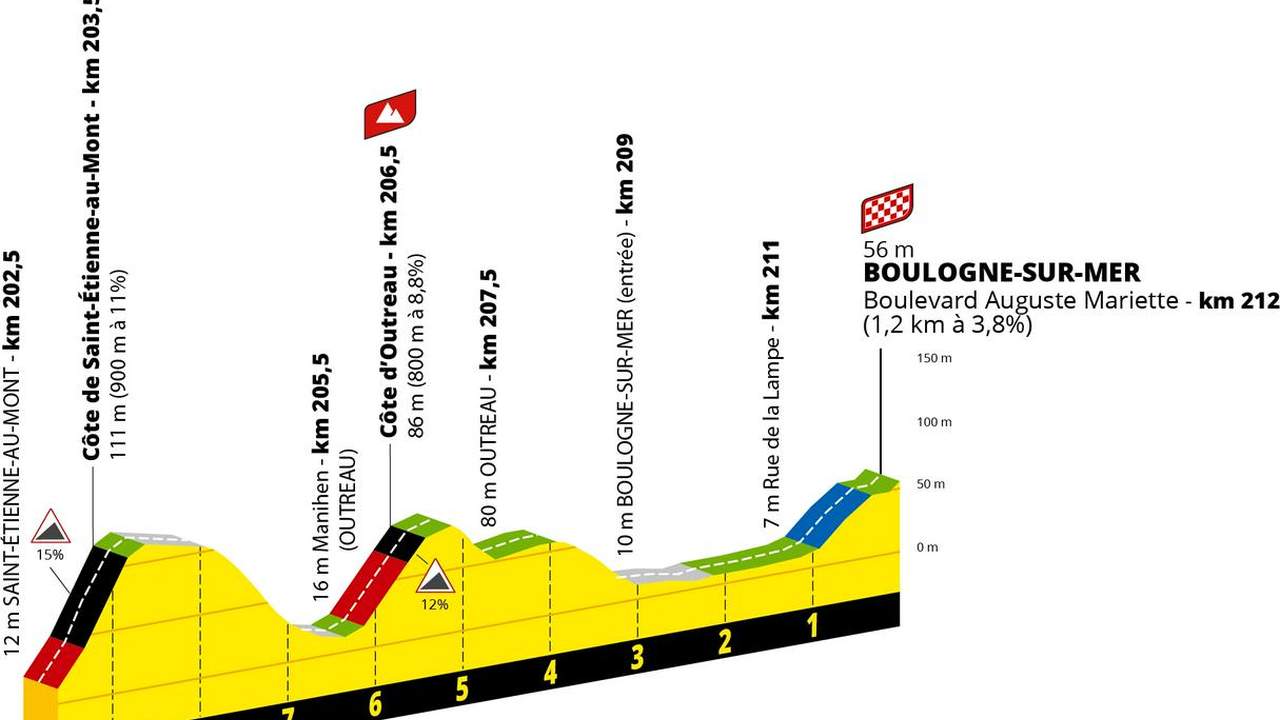
Even greater crosswind danger looms in Stage 3, which on paper again favors the sprinters. The profile of Stage 4, however, is far more jagged, with four categorized climbs packed into the final 30 kilometers. In the closing kilometers, riders will face the brutal Rampe de Saint Hillaire – a 900-meter climb averaging a punishing 10.6% gradient. A three-kilometer descent follows, and then a final 500-meter kicker before the finishing straight. Expect plenty of attacks and fireworks here.
Stage 5: A Time Trial Made for Evenepoel
The first major highlight of the race comes in Stage 5 on July 9th, when Caen – the “City of a Hundred Bells” – hosts a flat individual time trial. The 33-kilometer route includes just 200 meters of elevation gain. Based on his performance at the Critérium du Dauphiné, Remco Evenepoel will look to gain as much time as possible over Tadej Pogačar and Jonas Vingegaard. In that 17-kilometer pre-Tour time trial, the Belgian was 21 seconds faster than the Dane and a full 49 seconds ahead of the Slovenian.
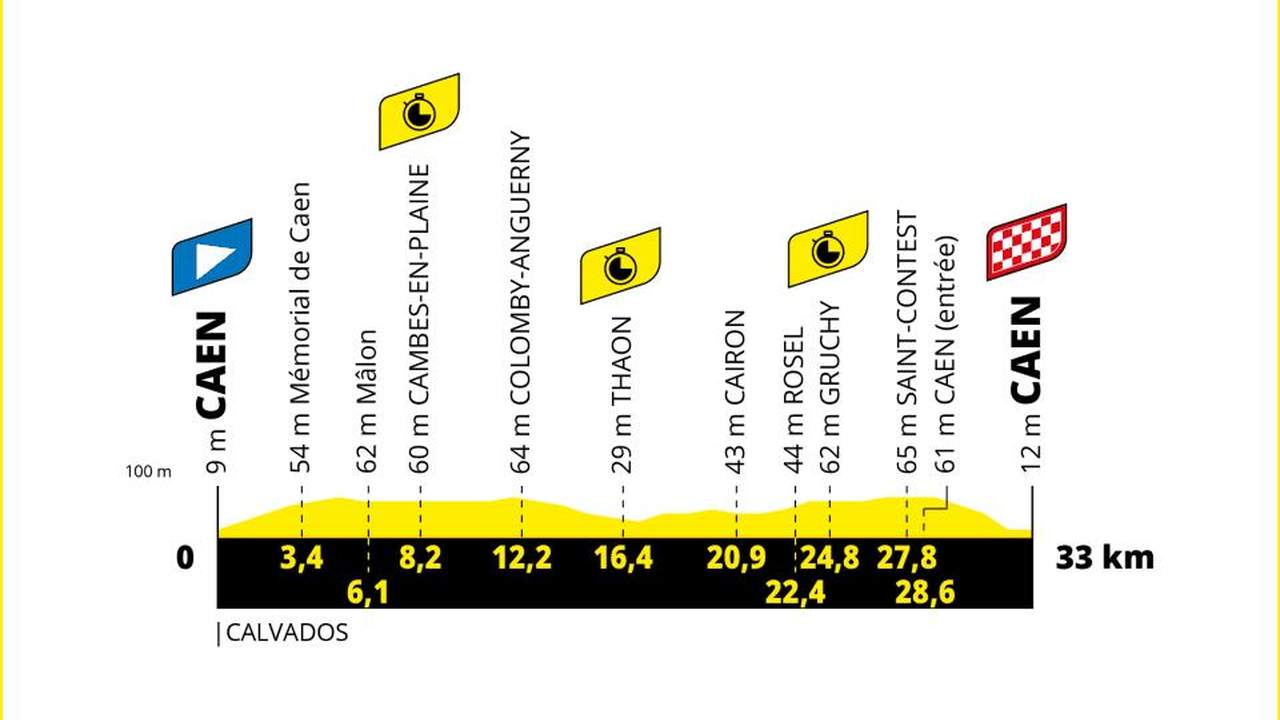
Mur de Bretagne: Boldly Marked in Van der Poel’s Notebook
Stage 6 takes the peloton across Normandy in the longest stage of this Tour (201 km), a hilly route featuring six categorized climbs and 3,500 meters of total elevation. It’s the perfect stage for a daring breakaway. Just a few kilometers before the finish, the riders face a steep 900-meter climb at 10.6%, followed by a descent, a brief flat section, and then a final 700-meter kicker with a 10% gradient to the line.
Stage 7 shifts all attention to the iconic Mur de Bretagne, which the riders will climb twice in the final 20 kilometers. Though only 2 km long, the climb is tailor-made for explosive attacks, starting with a brutal 10% gradient. It was on this very “wall” in 2021 that Mathieu van der Poel attacked and snatched the yellow jersey from Julian Alaphilippe.
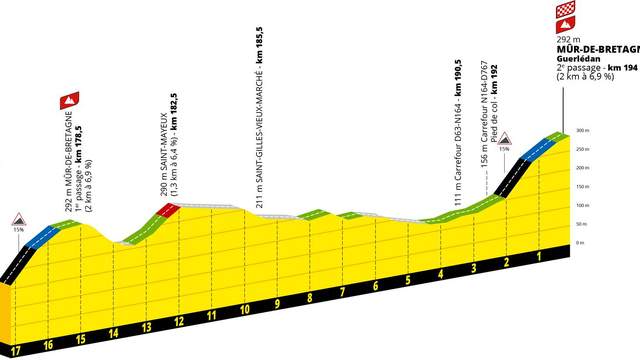
A Festive Monday with Eight Climbs
Stages 8 and 9 lead the riders into the heart of France. With no major obstacles on the route, both weekend stages are expected to favor the sprinters. But Stage 10, on Bastille Day, brings the first true mountain test of the Tour.
To mark the national holiday, organizers have pushed the first rest day to Tuesday and prepared a Monday spectacle featuring eight categorized climbs, capped off with a summit finish on Puy de Sancy (3.3 km at 8%). This peak, the highest in the Massif Central at 1,885 meters, will serve as the ultimate test after 4,450 meters of total climbing.
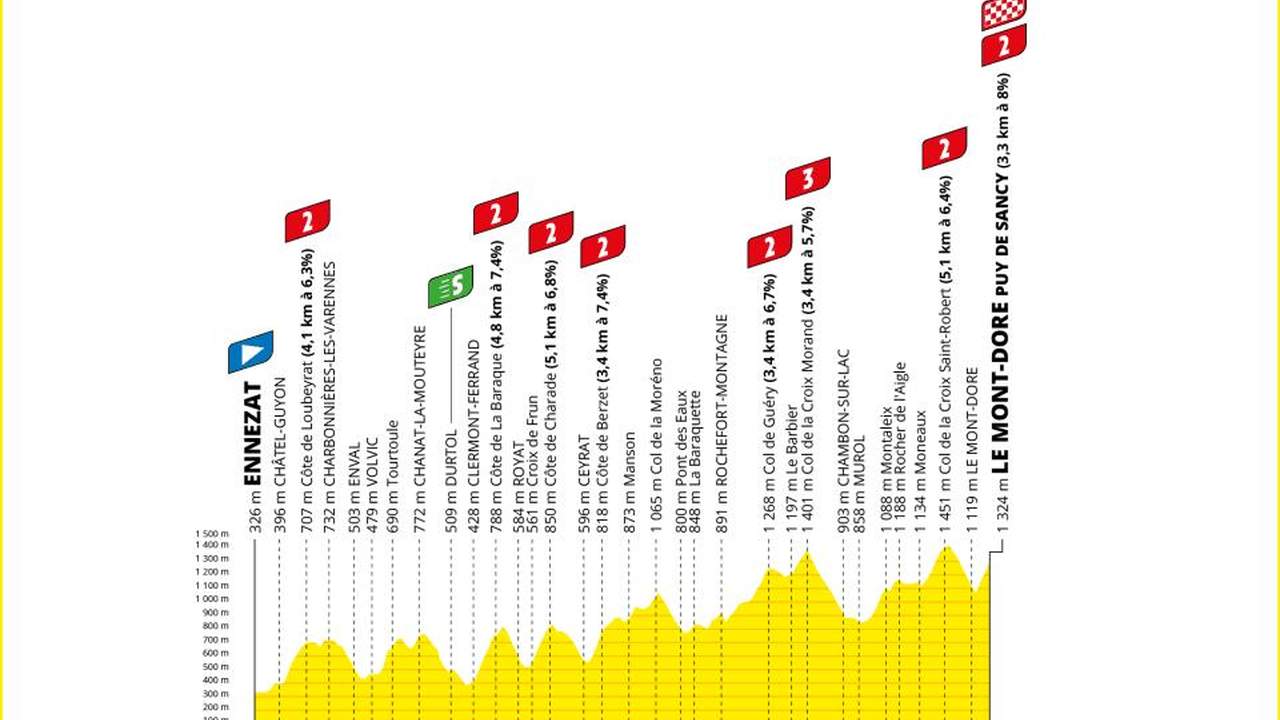
Pogačar Will Keep a Close Eye on Hautacam
After the rest day and a flat stage on Wednesday, the real showdown in the Pyrenees kicks off from Thursday to Saturday. The first of these stages packs three major climbs into the final 60 kilometers, with the decisive finish on Hautacam. This climb stretches 13.6 km with an average gradient of 7.8%, featuring punishing ramps of up to 11% midway through. It was here in 2022 that Wout van Aert and Jonas Vingegaard combined forces to finally crack Pogačar, leaving the Slovenian trailing by 1 minute and 4 seconds at the summit.
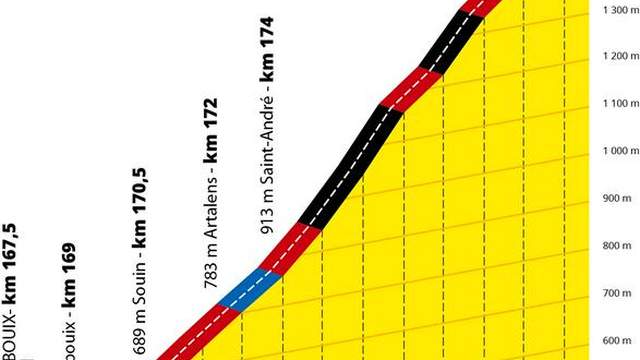
A Brutal Eight Kilometers of Climbing in the Time Trial
One of the decisive days of the race will be July 18th, when Stage 13 brings a mountain time trial. The route is 11 kilometers long – after 3 kilometers of flat roads, the riders will face 8 kilometers of relentless climbing with an average gradient of 7.8%. The final kilometer is particularly brutal, with ramps of up to 16%. It was on this very climb in 2022 that Pogačar defeated Vingegaard, but back then it was part of a traditional mountain stage. This time, they’ll be fighting against nothing but the clock.
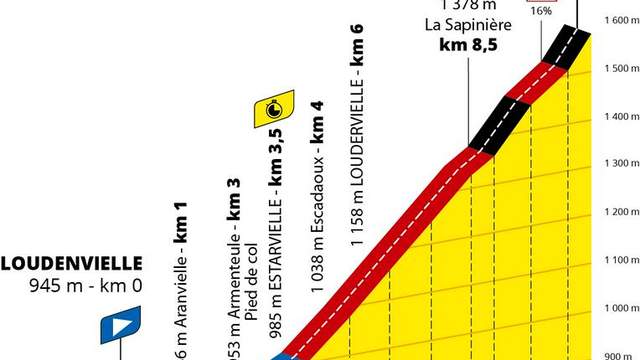
A Farewell to the Pyrenees with Nearly 5,000 Meters of Climbing
The Pyrenean triple concludes with the toughest stage of them all, featuring 4,950 meters of elevation gain and a final, hors-catégorie ascent to Luchon Superbagneres. Before the decisive climb, the riders must tackle a legendary trio – Tourmalet, Col d’Aspin, and Col de Peyresourde. Luchon Superbagneres, returning to the Tour for the first time in 36 years, is a 12.4 km climb averaging 7.5%, with the final 5 kilometers pushing into double-digit gradients.
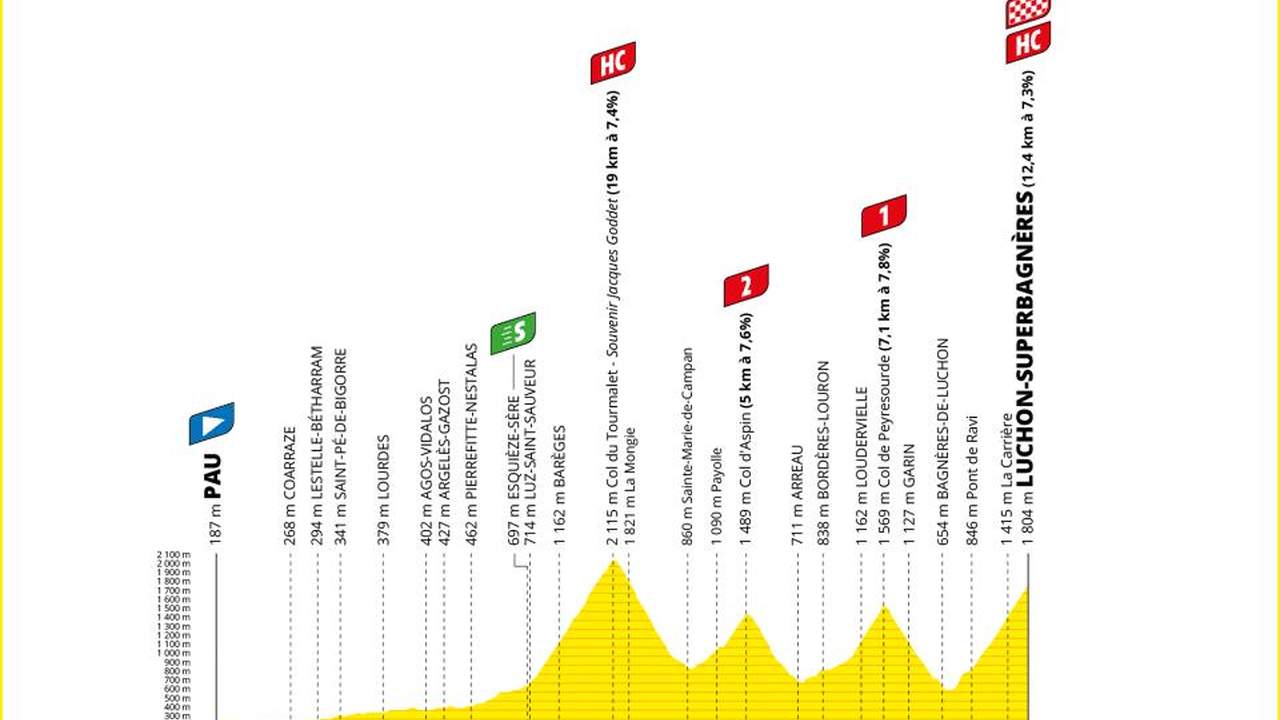
155 Kilometers of Warm-Up Before the Showdown on the Bald Mountain
The final week of the Tour kicks off with a bang on Tuesday, as Stage 16 promises a dramatic showdown on the legendary Mont Ventoux. The 171-kilometer stage is completely flat until the riders hit the “Bald Mountain,” where the race will be decided on a 15.7 km climb averaging 8.8% gradient and nearly 1,400 meters of vertical gain. The opening section is the steepest, with 10% ramps cutting through the forest, before the riders emerge into the barren, lunar-like landscape. In the final 1.5 kilometers, the gradient kicks back up over 10%, setting the stage for pure climbing drama.
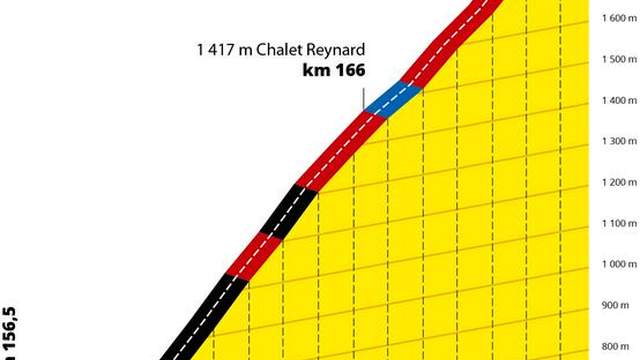
Col de la Loze – The Scene of Vingegaard’s Greatest Triumph
The grand Alpine finale takes place on Thursday and Friday, July 24th and 25th. First up is the queen stage, featuring three hors-catégorie climbs and the most elevation gain of this year’s Tour – a staggering 5,450 vertical meters. The finish line awaits at the race’s highest point, the 2,304-meter Col de la Loze, making its third appearance in Tour de France history. This time, the climb will be tackled for the first time from the eastern side via Courchevel, with a relentless 26.2-kilometer ascent averaging 6.5%. The final five kilometers are the most brutal.
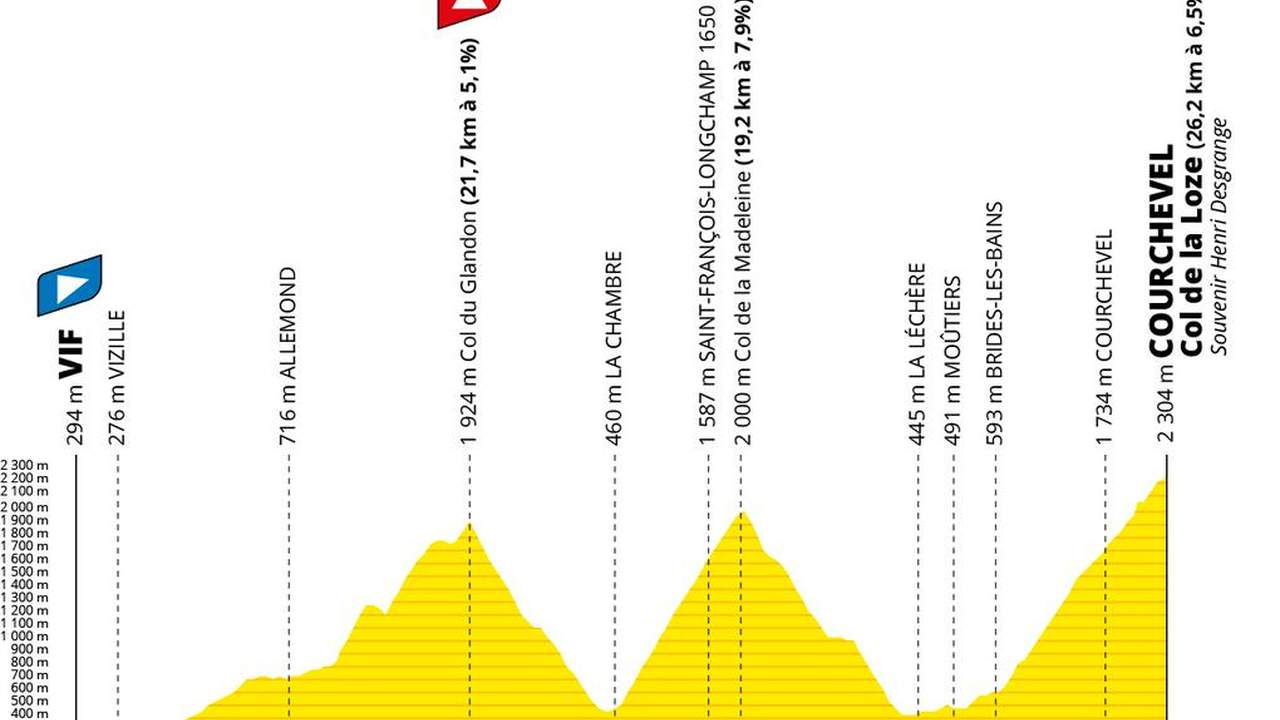
Pogačar has bitter memories of Col de la Loze. In 2020, Primož Roglič beat him here by 17 seconds, and in 2023 he cracked completely, losing six minutes to Vingegaard.
Closing the Alps with Another 2,000-Meter Summit
The next day offers no respite, with the route constantly climbing and descending. Riders will tackle five categorized climbs, two of which are hors-catégorie, including the decisive finish on La Plagne, where the summit sits above 2,000 meters. The final climb stretches 19.1 km with an average gradient of 7.2%. Barring any surprises, this stage will likely be the last big chance for the general classification contenders to gain time.
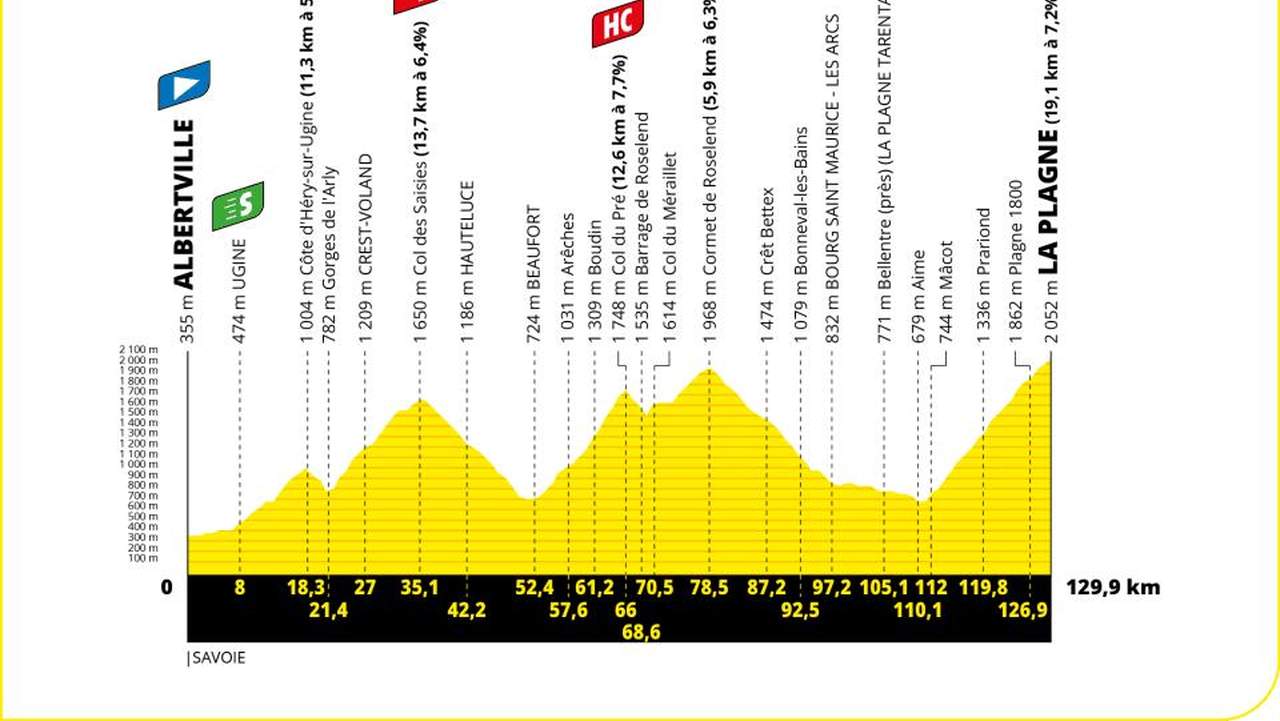
Saturday Brings One More Hilly Test, Then the Parisian Grand Finale
On Saturday, the riders face one last hilly stage before the grand finale in Paris on Sunday, July 27th, when the winner of the 112th edition of the Tour de France will be crowned.
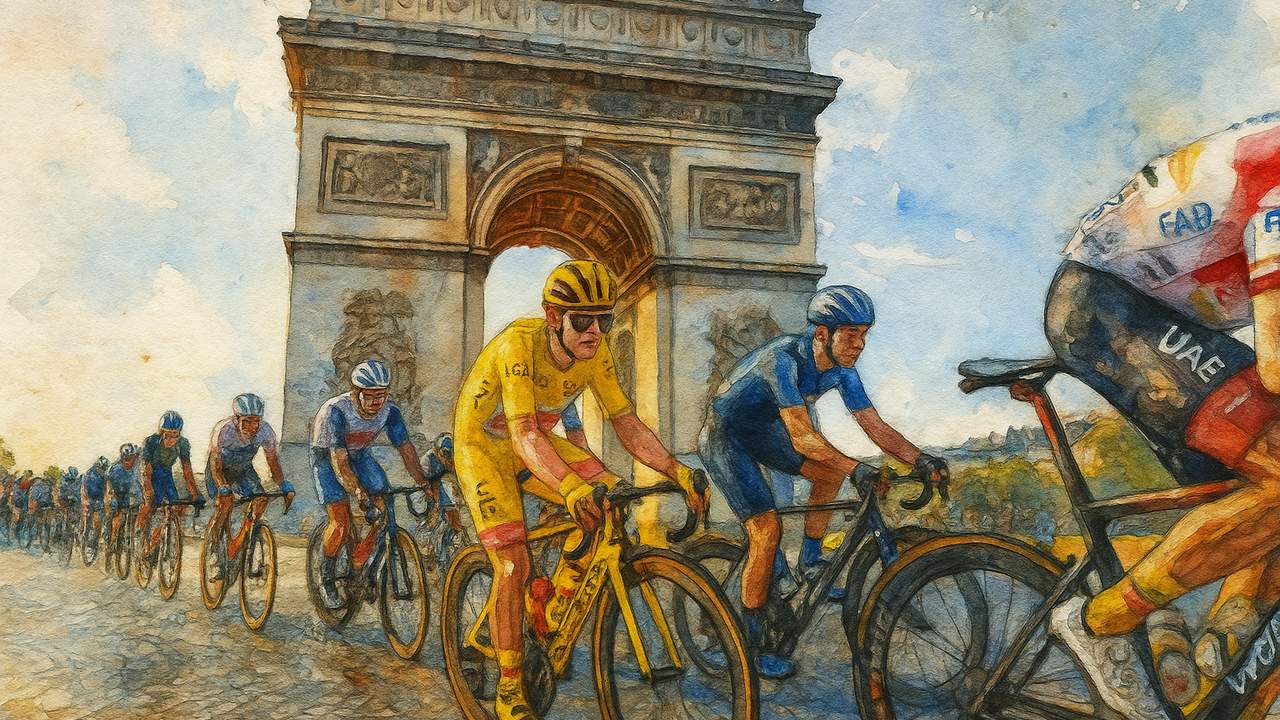
The 2025 Tour de France is shaping up to be one of the most thrilling editions in recent memory, with a perfect blend of legendary riders and a route designed for fireworks. Tadej Pogačar is aiming to cement his dominance with a fourth yellow jersey, but Jonas Vingegaard is determined to prove he can match – or even surpass – his Slovenian rival. Add to that the rising power of Remco Evenepoel, the resilience of João Almeida, the experience of Primož Roglič, and the ambition of Florian Lipowitz, and we have a lineup that promises non-stop drama.
The route itself is just as captivating. From the explosive Mur de Bretagne and the time trials to the brutal climbs of Mont Ventoux, Hautacam, and Col de la Loze, every stage feels like it could be decisive. With the return of the iconic Champs-Élysées finish – now with the added challenge of Montmartre – the Tour offers a mix of tradition and unpredictability.
This year’s Tour isn’t just a race; it’s a battle of legends, emerging talents, and tactical brilliance. Every kilometer will count, and every stage could write a new chapter in cycling history.
